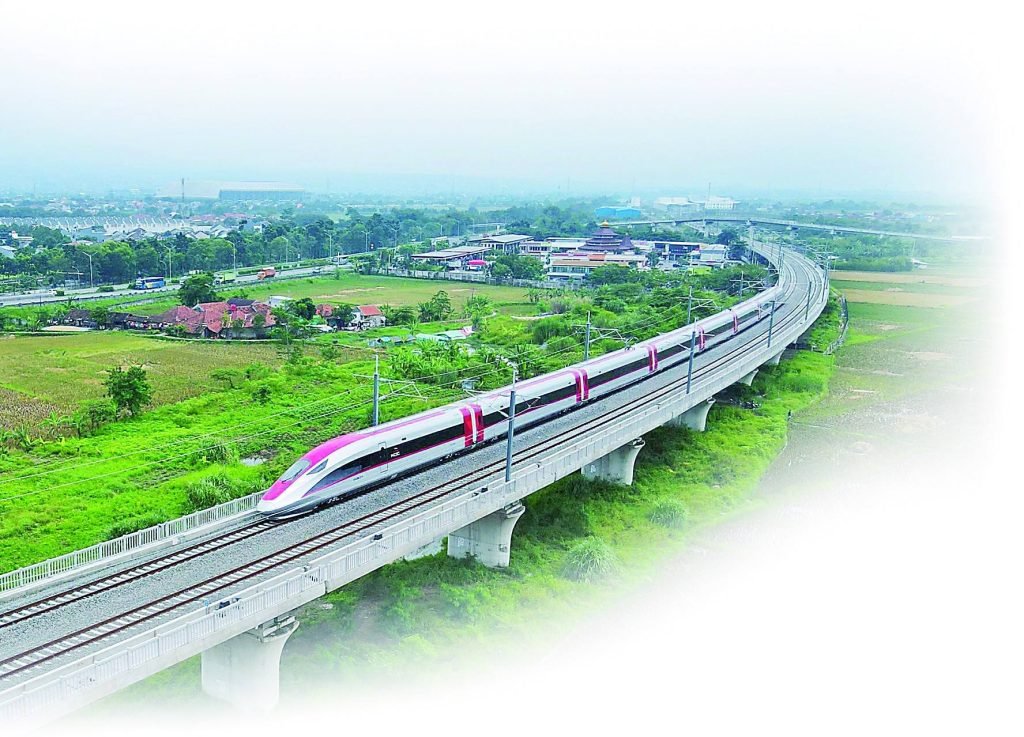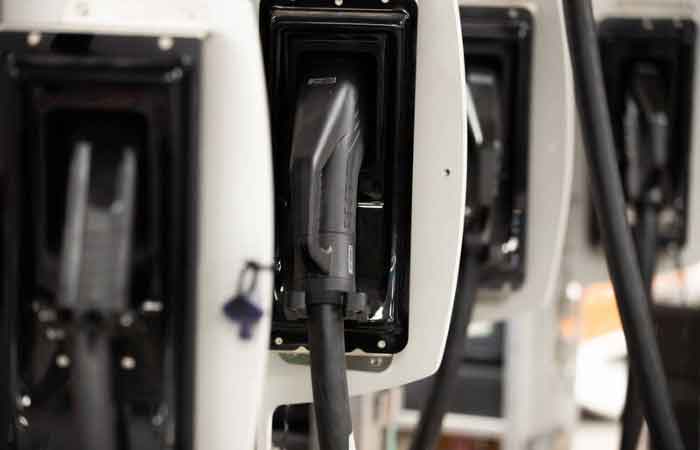刘凯 维罗妮卡
【编者按】印尼社会有一种声音,不仅不看好雅万高铁,更批评印尼政府依赖中国经济。中国学者刘凯与印尼学者维罗妮卡合作的文章《高铁驱动发展:雅万高铁对爪哇地区的经济效应分析》,通过事实与分析证实,雅万高铁的建成运营,必将为爪哇乃至印尼全国的经济注入新的发展动力。

刘凯:厦门大学南洋研究院世界经济博士研究生,中国·福建

维罗妮卡:Veronika S. Saraswati,印尼国际战略研究中心(CSIS)中国研究中心主任
一、引言
自2014年担任总统以来,佐科·维多多始终将基础设施建设作为执政优先事项。当年11月,佐科总统提出建设“全球海洋支点”战略,并将基础设施建设作为该战略的四大支柱之一,以此加强印尼大小岛屿间的互联互通。全长142.3公里的雅加达—万隆高速铁路(Kereta Cepat Jakarta Bandung, KCJB)是印度尼西亚乃至整个东南亚地区第一条高速铁路,也是中国与印尼共建“一带一路”的标志性工程。雅万高铁所在爪哇岛是印尼第五大岛,也是印尼人口数量最多、人口密度最高的岛屿,对现代交通基础设施具有现实的需求。
2022年11月16日,在巴厘岛G20峰会期间,佐科总统与习近平主席共同视屏观摩了雅万高铁试验运行。预计2023年6月,雅万高铁将正式投入运营,到时从雅加达至万隆之间的旅行时间,将从现在的3个多小时缩短至大约40分钟。将来,若雅万高铁延长至泗水,贯穿整个爪哇岛,将进一步深化地区间互联互通,带动爪哇全岛经济发展。
作为“一带一路”倡议标志性工程和印尼国家战略项目,雅万高铁不仅具有东南亚第一条高铁的示范效应,还承担着连通爪哇地区中心城市、加强邻近城市的互联互通、促进地区经济发展的重大使命。雅万高铁将设立四座车站,分别是哈利姆站、卡拉旺站、瓦利尼站和德卡鲁尔站,建成通车后将对沿线众多工业园区产生辐射和拉动作用,进一步创造就业、吸引投资,推动旅游、物流以及新兴产业发展,有效促进沿线地区形成“经济增长带”。从经济学视角看,雅万高铁是爪哇地区快速综合交通网的主骨架,随着雅万高铁的开通运行将对沿线城市可达性、要素市场及空间结构产生深远的影响。
二、基于要素流动理论的分析框架
从经济要素流动视角看,雅万高铁的开通提高了爪哇地区不同城市间的便捷度,促进了各类资源的跨区配置,缩短了城市间的时空距离,进而缓解了地区间资源错配,实现雅加达、万隆等邻近城市的市场整合进而产生经济集聚效应,也将促进爪哇岛、巴厘岛、苏门答腊等地区经济发展。
(一)要素区际流动的内涵
要素流动在经济学理论中通常作为前提条件,经济增长理论假设生产要素在国内可以自由流动,微观经济学中一般均衡理论也暗含了这一性质。要素的区际流动是区域经济发展的条件,影响一个区域发展的因素是多种多样的,包括自然因素、经济因素、社会因素、文化因素等。从流动性上看,可分为高流动性生产要素,例如货币资本、技术、高端人才、品牌、营销网络和经营管理方式;低流动性生产要素,例如一般劳动力;完全不流动生产要素,例如土地与自然资源。要素流动对区域差距的作用取决于要素边际收益的递减或递增,边际收益差异产生内生集聚力,可能导致区域间经济的不均衡增长,并形成“中心一外围”产业发展格局。为缩小区域产业发展的梯度差距,应着力于促进要素的合理、自由流动。良好的经济要素为生产经营创造了条件,有利于要素的优化配置。
人口、劳动力、资金、技术以及商品等因素能够跨越区域流动,一般而言,人口流动带动劳动力的流动,从而促进经济增长。与劳动力流动相同,资金,技术在区域之问流动中也带有增值的意义。流动性要素是区域经济中的投入性要素,也是区域经济成长的源泉,因为商品的生产过程正是由资金物化而成的固定资产、流动资金、技术与劳动力相结合的产物。市场的再生产与扩大再生产,也是生产要素不断投入的结果。要素在区际的流动性与商品经济的发展程度有着密切的相关关系。区域经济的发展,应催化和加快要素的流入与流出。人类社会发展的历史就是商品经济的发展史,也是要素区际流动不断扩大化的历史。资本不断地跨越区界的流动,从而使得市场中的技术发明与创造不断递增并迅速地扩散,同时推动劳动力大范围地迁移。
(二)要素区际流动的方向与动因
要素在区域间的流动方向大体上受三个规律的支配:第一,向需求引力最大的方向移动。需求引力越大时,说明要素稀缺性越严重,要素的供需矛盾越大,因而也越易于吸引其他区域的要素进入。第二,向收益最大化的方向移动,即要素在流动中带有明显的增值倾向,追求经济和非经济收益的扩大始终是要素流动的基本目标。第三,向最近的区域移动,即遵循就近流动原则。距离越近,信息传播得越完备越迅速,要素流动得越便利,成本也就越低。
一般来说,在发展中国家内部,由于农村劳动力存在着大量剩余,而城市工业在扩张中会出现劳动力不足的矛盾,因而在工业化过程中,劳动力的区际流动会表现出由农村指向城市,由小城市指向大城市的流向。但技术的流向却与之相反,技术的传播方向一般循着“大城市一小城市一农村”的方向进行,即与劳动力的流向相反。通常,要素能否流动和如何在区际流动主要取决于外界环境、内部机制和中介条件三重因素。其中,中介条件指的是联接区域与区域之间要素流动的一些中间环节。在中间环节中,交通运输工具,通常与劳动力在区域间的流动有着莫大的直接关系。在交通运输工具的保证程度较高时,会促进劳动力在区域之间的流动。
三、雅万高铁对爪哇地区的经济效应
鉴于印尼正处于现代基础设施建设的重要时期,雅万高铁的建设和开通将持续对沿线城市经济空间结构产生重要影响,包括提供快捷舒适的客运服务,释放既有铁路货运能力,还将深刻影响地区产业调整、人口布局和空间结构。
(一)提升爪哇地区城市可达性
雅万高铁的开通将改善沿线城市的可达性,进一步重塑生产要素的区域空间分布格局,加速资本和人口流动,促进产业发展,改善就业,并对土地和住房市场产生深远影响。可达性指“互动机会的大小”,即出行者利用给定的交通系统从出发地点到达活动地点的便利程度,高铁能够缩短城市间的旅行时间,对改善城市可达性起到积极作用。在整体层面,高铁使城市间的平均旅行时间“减少45%”,对沿线地区交通可达性的“贡献为32%”。
有学者认为,经济发达和人口密集的城市从高铁开通中获得的效益更显著。这显然有利于雅加达、万隆等爪哇大城市的发展。例如,基于中国高铁网络的可达性发现,东部城市比腹地城市从高铁可达性改善中获益更多。高铁将缩小像雅加达、万隆等大城市与沿线中小城市之间的可达性差距,由于高铁发展初期区域可达性的高度不平等,高铁网络建设将有利于可达性空间平衡,像泗水、梭罗、日惹、三宝垄等非高铁城市也能从相邻高铁城市的可达性改善中获益。
(二)加快爪哇地区要素流动
雅万高铁通过压缩沿线城市间的时空距离,提升区域生产要素的流动效率。爪哇地区生产要素的转移和资源的重新配置将带动产业结构优化和经济空间格局演化,助推高铁沿线以及爪哇岛地区经济高质量发展。首先,雅万高铁开通提升了爪哇地区的可达性,深刻影响区域和城市的经济活动,加速资本要素的流动。研究发现,交通网络发达的城市将吸引更多的区域间流动资本,高铁开通对城市风险资本流入和流出分别“增加1.0%和1.6%”。据此雅万高铁通过吸引沿线城市的资金流入,将加强雅加达、万隆等核心城市的地位。同时,沿线的小型企业、年轻企业和新兴产业也将从高铁建设带来的资本流动中获益更多。雅万高铁还将通过影响经济要素的空间分布来重塑区域空间结构,将推动雅加达、万隆等城市的金融服务业、制造业、纺织业等优势产业的结构升级。高铁在增强跨区联系的过程中,显著降低了城市间的贸易成本。
根据新经济地理学理论,贸易成本的降低将会使生产要素面临新的区位选择以增加真实收益,创新要素跨地区迁移带来的集聚或扩散效应将使得区域创新呈现空间分异。从“要素流动”的视角看,雅万高铁将促进爪哇地区创新发展,其基本逻辑是高铁开通降低了城市间的通勤成本,从而促进了面对面交流层面上的信息传播和知识溢出,并降低企业创新的社会成本和投资风险
(三)推动爪哇地区产业升级
雅万高铁开通将对爪哇地区三大产业和细分行业产生不同的影响,首先将持续对沿线农业全要素生产率产生积极影响,并加快第二产业的发展,尤其是促进制造业集聚。此外,雅万高铁将促进生产性服务业集聚,随着高铁网络日趋完善,出现明显的促进作用。细分行业方面,爪哇地区的旅游业将从雅万高铁可达性改善中获益更大。研究表明,高铁开通有效地促进了旅游、商务服务业显著发展,包括住宿、餐饮业、零售业等,人员运输效率的提升会促使城市发挥自身比较优势,对旅游业的发展产生积极影响,城市间旅游经济联系增强。
由于存在替代效应,虽然爪哇地区的航空、普通铁路等城市间的运输行业将受到雅万高铁开通带来的负面影响,但多式联运等合作有助于扩大服务市场并提升旅客服务质量。宏观上,雅万高铁开通能够通过提高生产要素跨区域流动速度、强化城市间资源配置的联动性,推动交易成本的降低以及生产要素的跨区流动,破除不同城市要素自由流动的壁垒,提高城市间联系频率进而降低资源错配对于产业结构调整的不利影响。微观上,企业在进行异地投资或设厂时需要考虑交易成本、运输成本以及时间成本等,交通设施便捷度的提升显著地降低了此类社会成本,使得企业异地投资成为可能,资本投资效率的提升逐渐形成产业协同集聚效应,从而为产业结构优化提供机遇。
此外,雅万高铁在建设过程中本身就是一个庞大的产业链条,高速铁路的修建会促进上下游电力通信、精密仪器以及信息技术等产业的发展,在优化沿线城市产业结构的同时也促进了新型基础设施建设。从上游的技术研究、设计开发、设计咨询,到中游的建设施工、装备制造,再到下游的运营维护、增值服务等,在这条完整的产业链里,爪哇地区乃至印尼全国的相关产业结构都将得到不同程度的发展。
(四)加速爪哇地区人口迁移
雅万高铁开通将有利于提高区域间运输能力并缩短旅行时间,在促进人口流动中发挥重要作用。研究发现,人口增长与城市的位置、规模和交通改善程度有关。雅万高铁开通后将促使爪哇地区非高铁城市居民向雅加达、万隆等高铁城市迁移,导致部分小城市的人口流出现象。内生增长理论表明,地区创新增长主要来源于研发投入和知识溢出。鉴于知识根植于个体的特征事实,人才流动是区域间知识溢出特别是隐性知识溢出的最主要途径。因此,雅万高铁开通提高了人才的跨区流动性,促进了不同地区间的知识溢出。
交通便利地区的人口和就业都在增加。高铁通勤是不可忽视的人口空间移动现象。作为一种高效便捷的城际出行方式,高铁使得在一个城市工作而在另一个城市居住的家庭数量不断增加。高铁是解释劳动合同增长的关键变量,高铁网络建设开启了高流动性时代,对改善就业机会产生积极影响。实证研究表明,高铁对城市就业的影响发现,高铁开通使整个城市的“客流量增加10%,就业率增加7%”。因此,雅万高铁开通将显著提升雅加达、万隆等城市就业机会,高铁的空间溢出效应显著,并且对缩小城乡收入差距具有积极影响。
(五)释放爪哇地区土地与住宅市场潜力
受可达性改善引发的产业集聚将伴随人口集中和土地扩张。雅万高铁开通带来的可达性改善将增加对家庭和公司的区位吸引力,为沿线城市土地开发提供新的机遇。研究发现,高铁对沿线城市的土地价值影响远大于既有铁路。从整体看,高铁开通可使城市建成区增长速度“平均提高11.2%”。由于中小城市原有土地开发强度一般比较低,因此,往往利用高铁建设契机加速土地扩张。土地作为住宅的中间品,两者通过供求和价格的传导高度关联,因此,在影响上往往表现出一致性。高铁网络可达性对住宅价格有正向影响,中小城市的住宅价格受到高铁开通的影响更大。
高铁站是城市内受高铁建设影响最直接的区域,高铁建设和开通将有力促进站点地区的土地开发。实证研究表明,高铁开通使城市土地利用强度“提高了约4.4%”。高铁建设有利于站区的经济增长,且主要来源是位于距离站点30-110 KM范围内的资源再分配效应。雅万高铁开通后,从雅加达至万隆沿线的城际通勤者的数量均随着城际通勤条件的改善而增加,有利于形成高铁“1小时通勤圈”。
基于此,雅万高铁沿线不同站区的设立和建设,将促进以高铁新城为主体的城市化进程,并对周边住宅的价格产生较大的影响。哈利姆站、卡拉旺站、瓦利尼站和德卡鲁尔站四个沿线高铁站建成通车后,将对周边的住宅价格产生辐射和拉动作用。
四、结论与展望
长期以来,印尼经济发展主要依靠传统要素驱动。这种发展方式重视数量的扩张,忽视发展质量和效益,导致资源消耗过多,无法实现经济社会可持续发展。后疫情时代,全球经济发展充满诸多不确定性,传统发展动力将持续减弱,亟须依靠创新驱动培育新的经济增长点、打造高质量发展新引擎,加快由传统要素驱动发展向创新驱动发展转变。计划于2023年6月正式运营的雅万高铁将为爪哇乃至印尼全国经济注入新的发展动力。
雅万高铁的建设与开通能够显著缩短爪哇地区城际间的旅行时间,对改善城市可达性起到积极作用。可达性的改善将加速爪哇地区、印尼全境甚至国际资本和人口等要素在区域间的流动,深刻影响高铁沿线城市发展、产业结构和土地利用格局。要素流动使得雅加达、万隆等大城市对周边中小城市产生“虹吸效应”,带动高铁城市的产业升级。同时增加就业,缩小城乡收入差距以及促进土地开发。此外,雅万高铁及其沿线高铁站的建设,有助于爪哇地区打造大型综合交通枢纽,形成进出爪哇经济腹地的“便捷通道”,进一步拉动苏门答腊、巴厘岛等地区等协同发展。
雅万高铁建成通车后,将直接促进以雅加达为中心的首都地区和以万隆为中心的西爪哇经济腹地的经济、社会、产业、交通大融合,人才、技术等要素资源在沿线城市间共享。人才流、物资流、技术流、信息流的快速流动,为印尼本土企业以及全球外资企业创造高品质的发展平台。雅加达总部研发中心与西爪哇生产中心、技术中心,将形成更加便捷的联结互动。“空间距离”对要素流动的限制开始减弱,不同城市间的市场边界逐步淡化,市场进入壁垒以及交易成本持续降低,从而有力地促进了城市间的市场交流与融合,爪哇地区经济融合一体化将逐步增强。未来,印尼应进一步完善雅万高铁线路空间布局,充分发挥高铁对人力资本及创新要素的空间配置效应,强化高铁沿线城市间的分工合作与协同联动,实施差异化的区域创新发展策略。
High-Speed Railways Drives Development:
Analysis of the Economic Effects of Jakarta-Bandung High-Speed Railway on Java
Liu Kai[①]
Veronika S. Saraswati[②]
Since taking offices as Indonesian President in 2014, President Joko Widodo has been always putting infrastructure construction as a priority during his administration. In November of that year, President Jokowi proposed a “global maritime fulcrum” strategy and constructed infrastructure as one of the four pillars of the strategy to strengthen connectivity between Indonesia’s large and small islands.
The 142.3-kilometer Jakarta-Bandung high-speed railway is the first high-speed railway in Indonesia and the entire Southeast Asian region, and it is also a landmark project of the “Belt and Road” jointly built by China and Indonesia Java, where the Jakarta-Bandung High-speed Railway (JBHSR) is located, is Indonesia’s fifth-largest island and the most populous and densely populated island in Indonesia, with a realistic need for modern transportation infrastructure.On November 16th, 2022, during the G20 Summit in Bali, President Jokowi and President Xi Jinping jointly observed the trial operation of the JBHSR.
It is expected that the JBHSR will officially start to operate in June 2023, and the travel time between Jakarta and Bandung will be shortened from the current of more than three hours reduced sharply to about 40 minutes. In the future, the extension of the JBHSR route can reach to Surabaya and through the entire island of Java will further deepen regional connectivity and drive the economic development the entire Java island.As a landmark project of Belt and Road Initiative (BRI) and a national strategic project of Indonesia, the JBHSR not only has the demonstration effect of the first high-speed railway in Southeast Asia, but also undertakes the major mission to connect the central cities in Java, to strengthen interconnection of neighboring cities, and to promote regional economic development.
The JBHSR has set up four stations, namely Halim, Karawang, Wallini and Tegalluar stations, which will radiate and pull many industrial parks along the line, further create jobs; attract investment; promote development of tourism, logistics and emerging industries; and effectively promote formation of “economic growth belts” along the route.From economics perspective, the JBHSR is the main skeleton of the rapid integrated transportation network in Java. The opening and operation of the JBHSR will have a profound impact on the accessibility, factor market and spatial structure of cities along the route.
- An analytical framework based on factor flow theory
From the perspective of the flow of economic factors, establishment of the JBHSR will improve the convenience between different cities in Java, promote the cross-regional allocation of various resources, shorten time and space distance between cities, thereby alleviating misallocation of resources between regions, realizing the market integration of neighboring cities such as Jakarta and Bandung and producing economic agglomeration effects, and will boost the economic development of Java, Bali, Sumatra and other regions.
a.interregional flow of elements theory substance
Factor flows are often used as a precondition in economic theory, where economic growth theory assumes that factors of production can flow freely within the country, and this characteristic is implied in general equilibrium theory in microeconomics. The interregional flow of factors is the condition for regional economic development, and the factors affecting the development of a region are diverse, including natural factors, economic factors, social factors, cultural factors, etc.
From the perspective of liquidity, it can be divided into highly liquid production factors, such as monetary capital, technology, high-end talents and talented persons, brands, marketing networks and operation and management methods; low-mobility factors of production, such as general labor; completely inactive factors of production, such as land and natural resources.
The effect of factor flowing on regional disparities depends on the diminishing or increasing marginal returns of factors, and the marginal income difference produces endogenous agglomeration, which may lead to uneven economic growth between regions and form a “center-periphery” industrial development pattern. In order to narrow the gradient gap in regional industrial development, efforts should be made to promote the reasonable free flow of factors.
Good economic factors create conditions for production and operation, which is conducive to the optimal allocation of factors. Factors such as population, labour, capital, technology and commodities can move across regions, and in general, population movements drive labour mobility, thereby contributing to economic growth. Labor mobility, capital and technology are also added value in regional mobility.
Liquidity factors are input factors in the regional economy and the source of regional economic growth, because the production process of commodities is combination product of fixed assets, working capital, technology and labor force materialized by capital. Reproduction of the market and expansion of the reproduction are also a result of continuous input of the production factors. Interregional mobility of the factors is closely related to degree of commodity economy development.
The development of regional economy must catalyze and accelerate the inflow and outflow of factors. The history of the development of human society is the history of the development of the commodity economy, and it is also the history of the continuous expansion of the interregional flow of factors. The continuous flow of capital across regional boundaries leads to the increasing and rapid diffusion of technological inventions and creations in the market, while promoting the migration of labor to large range.
b.The direction and drivers of interregional flow of elements
The flow direction of elements between regions is generally governed by three laws, first, moving in the direction where the gravity of demand is greatest. When the demand gravity is greater, the more serious of the scarcity of factors, the greater the contradiction between supply and demand of factors, and therefore the easier it is to attract factors from other regions to enter. Second, moving in the direction of maximizing returns, that is, factors have obvious value-added tendencies in the flow, and the pursuit of the expansion of economic and non-economic benefits is always the basic goal of factor flow. Third, moving to the nearest area, i.e. following the principle of proximity mobility. The closer of the distance, the more complete and rapid the information spreads, the easier the flow of factors, and the lower of the cost.
Generally speaking, in developing countries, because there is a large surplus of rural labor, and urban industry will have a problem of insufficient labor in the expansion, so in the process of industrialization, the interregional flow of labor will show the flow from rural to urban and from small cities to large cities.However, the flow of technology is the opposite, and the direction of technology dissemination generally follows the direction of “big city, small city and rural area”, that is, the opposite direction of labor flow.
In general, whether and how factors can flow between regions depends mainly on the triple factors of external environment, internal mechanisms and intermediary conditions. Among them, mediation conditions refer to some intermediate links connecting the flow of features between regions. In the intermediate link, the means of transportation usually have a great direct relationship with the movement of labor between regions. When the means of transportation are more secure, it will boost the movement of labor between regions.
III. Economic effects of the JBHSR for the Java region
Considering by fact that Indonesia entering in an important period of modern infrastructure construction, the construction and opening of the JBHSR will continue to have an important impact on the economic and spatial structure of cities along the route, including providing fast and comfortable passenger services, releasing existing railway freight capacity, and profoundly affecting regional industrial adjustment, demography and spatial structure.
a.Improve urban accessibility in Java
The opening of the JBHSR high-speed railway will improve the accessibility of cities along the high-speed railway, further reshape the regional spatial distribution of production factors, accelerate capital and population flows, promote industrial development and employment improvement, and have a profound impact on the land and housing market.
Accessibility refers to the “size of the interaction opportunity”, that is, the ease with which travelers can use a given transportation system to get from the point of departure to the place of activity (Hansen, 1959)[③]. High-speed railway can shorten the travel time between cities and play a positive role in improving urban accessibility. On an overall level, high-speed railway reduces average travel times between cities by 45% (Liu & Zhang, 2018)[④]. High-speed railway contributes 32% to the accessibility of transportation along the route (Cascetta et al., 2020)[⑤].
Some scholars believe that economically developed and densely populated cities have gained more significant benefits from the opening of high-speed railway (Cao et al., 2013)[⑥]. This is obviously conducive to the development of big cities in Java such as Jakarta and Bandung. For example, based on the accessibility findings of China’s high-speed railway network, eastern cities benefit more from improved high-speed railway accessibility than hinterland cities (Zhu et al., 2016)[⑦]. High-speed railway will narrow the accessibility gap between large cities such as Jakarta and Bandung and small and medium cities along the route, due to the high degree of inequality in regional accessibility in the early stage of high-speed railway development, the construction of high-speed railway network will be conducive to the spatial balance of accessibility; non-high-speed railway cities such as Surabaya, Solo, Yogyakarta and Semarang can also benefit from the accessibility improvement of neighboring high-speed railway cities (Zhou et al., 2018)[⑧].
- Accelerating the factor flowing in Java
By compressing the time and space distance between cities along the route, the JBHSR improves the flow efficiency of regional production factors. The transfer of production factors and the reallocation of resources in Java will drive the optimization of industrial structure and the evolution of economic spatial pattern and promote the high-quality economic development along the high-speed railway line and in Java Island.
First of all, the operationalization of the JBHSR will improve the accessibility of the Java region, profoundly affect the economic activities of the region and the city, and accelerate the flow of capital factors. It is found that cities with developed transportation networks will attract more interregional working capital, and the opening of high-speed railway will increase urban risk capital inflow and outflow by 1.0% and 1.6%, respectively (Duan et al., 2021)[⑨]. Accordingly, the JBHSR will strengthen the position of core cities such as Jakarta and Bandung by attracting capital inflows from cities along the route. At the same time, small businesses, young enterprises and emerging industries along the route will also benefit more from the capital flows brought by the construction of high-speed railway (Duan et al., 2020)[⑩].
The JBHSR will also reshape the regional spatial structure by affecting the spatial distribution of economic factors, and will promote the structural upgrading of advantageous industries such as financial services, manufacturing, and textiles in Jakarta, Bandung and other cities. In the process of enhancing cross-regional connections, high-speed railway has significantly reduced the cost of trade between cities (Bernard et al., 2019)[11]. According to the theory of new economic geography, the reduction of trade costs will make production factors face new location choices to increase real returns, and the agglomeration or diffusion effect brought about by the cross-regional migration of innovation factors will make regional innovation appear spatially differentiatedFrom the perspective of factor flowing, the JBHSR will promote the innovation and development of the Java region, and the basic logic is that the operationalizing the high-speed railway reduces the commuting cost between cities, thereby promoting information dissemination and knowledge spillover at the level of face-to-face communication, and reducing the social cost and investment risk of enterprise innovation (Donaldson & Hornbeck, 2016)[12].
c.Promoting industrial upgrading in Java
Operationalization of the JBHSR will have different impacts on the three major industries and sub-sectors in Java; it will prominently continue to have a positive impact on the total factor productivity of agriculture along the route, and accelerate the development of the secondary industry, especially to promote manufacturing agglomeration. In addition, the JBHSR will promote the agglomeration of productive service industries, and with the improvement of the high-speed railway network, there will be a significant promotion effect (Shao et al., 2017)[13]. In terms of sub-sectors, the tourism industry in the Java region will benefit more from the improved accessibility of the JBHSR. The study argues that the operationalization of the high speed railway has effectively promoted the significant development of tourism and business service industries, including accommodation, food industry, retail industry, etc., and the improvement of personnel transportation efficiency will promote cities in reaching their own comparative advantages, have a positive impact on the development of tourism, and enhance the tourism economic ties between cities (Jin et al., 2020)[14]. Due to the substitution effect, the inter-city transport industry such as aviation and ordinary railways has been negatively affected by the establishment of the JBHSR, but cooperation such as multimode transportation can help expand the service market and improve the quality of passenger services (Jiang & Zhang, 2016)[15].
At the macro level, the opening of the JBHSR can improve the cross-regional flow speed of production factors, strengthen the linkage of resource allocation between cities, push reduction of transaction costs and cross-regional flow of production factors, break down the barriers to the free flow of factors in different cities, increase the frequency of inter-city connections, and reduce the adverse impact of resource misallocation on industrial structure adjustment.
At the micro level, enterprises need to consider transaction costs, transportation costs and time costs when making long-distance investment or setting up factories, and the improvement of transportation facilities significantly reduces such social costs, making it possible for enterprises to invest in different places, and the improvement of capital investment efficiency gradually forms an industrial synergistic agglomeration effect, thereby providing opportunities for industrial structure optimization.
Besides, the construction of the JBHSR itself is a huge industrial chain, the construction of high-speed railway will boost the development of upstream and downstream communications, precision instruments and information technology and other industries, while optimizing the industrial structure of cities along the line and also promoting the construction of new infrastructure.
From upstream technology research, design and development, design consulting, to midstream construction, equipment manufacturing, to downstream operation and maintenance, value-added services, etc., in this long industrial chain, the relevant industrial structure in Java and even Indonesia will be developed to varying degrees.
- Accelerating migration in Java
The establishment of the JBHSR will help improving interregional transport capacity and shorten travel time, and play an important role in promoting population movement. The study found that population growth correlated with the location, size and degree of transportation improvement of cities (Coronado et al., 2019)[16]. The JBHSR will lead to the migration of residents of non-high-speed railway cities in Java to high-speed railway cities such as Jakarta and Bandung, resulting in population outflow from some small cities. The endogenous growth theory shows that regional innovation growth mainly comes from R&D investment and knowledge spillover.
In viewing the fact that knowledge is rooted in the characteristics of individuals, talented persons flowing is the most important way for interregional knowledge spillover, especially tacit knowledge spillover. Therefore, the opening of the JBHSR has improved the cross-regional mobility of talents and promoted the spillover of knowledge between different regions.
The population and employment are increasing in areas with easy access. High-speed railway commuting is a phenomenon of population spatial movement that cannot be ignored. As an efficient and convenient way to travel between cities, high-speed railway has enabled an increasing number of families working in one city and living in another (Chen et al., 2016)[17]. High-speed railway is a key variable explaining the growth of labor contracts, and the construction of high-speed railway networks has ushered in an era of high mobility, which has a positive impact on improving employment opportunities. Empirical studies have shown that the impact of high-speed railway on urban employment and found that establishment of the high-speed railway increased passenger traffic by 10% and employment by 7% throughout the city (Lin, 2017)[18]. Therefore, the operationalizing of the JBHSR will significantly improve employment opportunities in Jakarta, Bandung and other cities, and the spatial spillover effect of high-speed railway is significant, and it will have a positive impact on narrowing the income gap between urban and rural areas.
- Unleash the potential of the land and housing market in Java
Industrial agglomeration triggered by improved accessibility will be accompanied by population concentration and land expansion. The improved accessibility brought about by JBHSR will increase the location attractiveness for families and companies, and provide new opportunities for urban land development along the route.The study found that the impact of high-speed railway on the land value of cities along the route is more higher than that of existing railways (Tang et al., 2021)[19]. On the whole, the operationalization of the high speed railway can increase the growth rate of urban built-up areas by an average of 11.2% (Zhu, 2021)[20]. Since the original land development intensity of small and medium-sized cities is generally relatively low, the opportunity of high-speed railway construction is often used to accelerate land expansion. As an intermediate product for housing, land is highly correlated through the transmission of supply, demand and price, so it often shows consistency in impact. The accessibility of the high-speed railway network has a positive impact on residential prices, and residential prices in small and medium-sized cities are more affected by the opening of high-speed railway (Chen & Haynes, 2015)[21].
The high-speed railway station is the area most directly affected by the construction of high-speed railway in the city; the construction and operationalization of high-speed railway will effectively promote the land development of the station area. Empirical studies show that the opening of the high speed railway increases urban land use intensity by about 4.4% (Niu et al., 2021)[22]. The construction of high-speed railway is conducive to the economic growth of the station area, and the main source is the resource redistribution effect located within 30-110 KM from the station (Meng et al., 2018)[23]. Following the establishment of the JBHSR, the number of intercity commuters along the route from Jakarta to Bandung has increased with the improvement of intercity commuting conditions, which is conducive to the formation of a “one-hour commuting circle” of high-speed railway. Therefore, the construction of different station areas along the JBHSR railway will promote the urbanization process with the new high-speed railway city as the main body, and have a greater impact on the price of surrounding housing (Yang & Huang, 2022)[24]. After the completion and opening of the four high-speed railway stations along the Halim, Karawang, Wallini and Tegalluar stations, it will have a radiating and pulling effect on the surrounding residential prices
Ⅳ.Conclusions and Prospects
Since long period, Indonesia’s economic development has mainly been mainly driven by traditional factors. This type of development focuses on quantity expansion while ignoring development quality and benefits, resulting in excessive consumption of resources and failure to achieve sustainable economic and social development. In the post-pandemic era, global economic development is full of uncertainties, and traditional development drivers continue to weaken. It is urgent to rely on innovation to drive new economic growth points, create new engines for high-quality development, and accelerate the transformation from traditional factor-driven development to innovation-driven development.
The JBHSR, which is scheduled to be officially to going to open and operate in June 2023, will inject new impetus for the economy of Java and even Indonesia. The construction and opening of the JBHSR can significantly shorten the travel time between cities in Java and play a positive role in improving urban accessibility. The improvement of accessibility will accelerate the factor flowing of capital and population between cities in Java and the whole of Indonesia, and even international, and profoundly affect the industrial structure and land use pattern of cities along the high-speed railway.
The flow of elements makes big cities such as Jakarta and Bandung produce a “absorbing effect” on surrounding small and medium-sized cities, driving the industrial upgrading of high-speed railway cities. At the same time, it will increase employment, narrow the income gap between urban and rural areas and boost land development. In addition, the construction of the JBHSR and the high-speed railway stations along the line will help the Java region to build a large-scale comprehensive transportation hub, forming a “convenient channel” to enter and exit the economic hinterland of Java, and further promote the coordinated development of Sumatra, Bali and other regions.
After the JBHSR is accomplished and opened, it will directly promote the integration of economy, society, industry, and transportation between the capital region centered on Jakarta and the economic hinterland of West Java centered on Bandung, and the sharing of essential resources such as talents and technology among cities along the line. The rapid flows of talent, material, technology, and information create a high-quality development platform for Indonesian local enterprises and global foreign-funded enterprises. The R&D center of the Jakarta headquarters and the production center and technology center in West Java will form a more convenient connection and interaction.
The restriction of “spatial distance” on the flow of factors began to blur, the market boundaries between different cities gradually weakened, and the market entry barriers and transaction costs were reduced, thus effectively promoting the market exchange and integration between cities. The economic integration and integration of the Java region will progressively enhance. In the future, Indonesia should further improve the spatial layout of the JBHSR railway line, give full play to the spatial allocation effect of high-speed railway on human capital and innovation elements, strengthen the division of labor and cooperation and synergy among cities along the high-speed railway, and implement differentiated regional innovation and development strategies.
[①] Liu Kai is a Doctoral Candidate at Research School for Southeast Asian Studies, Xiamen University, Fujian, China.
[②] Veronika S. Saraswati is a China Study Unit Convener, CSIS Indonesia.
[③] Hansen, W. G. (1959). How accessibility shapes land use. Journal of the American Institute of Planners, 25(2), 73-76.
[④] Liu, L., & Zhang, M. (2018). High-speed rail impacts on travel times, accessibility, and economic productivity: A benchmarking analysis in city-cluster regions of China. Journal of Transport Geography, 73, 25-40.
[⑤] Cascetta, E., Cartenì, A., Henke, I., & Pagliara, F. (2020). Economic growth, transport accessibility and regional equity impacts of high-speed railways in Italy: Ten years ex post evaluation and future perspectives. Transportation Research Part A: Policy and Practice, 139, 412-428.
[⑥] Cao, J., Liu, X. C., Wang, Y., & Li, Q. (2013). Accessibility impacts of China’s high-speed rail network. Journal of Transport Geography, 28, 12-21.
[⑦] Zhu, Y., Diao, M., & Fu, G. (2016). The evolution of accessibility surface of China in the high-speed-rail era. Environment and Planning A: Economy and Space, 48(11), 2108-2111.
[⑧] Zhou, J., Yang, L., & Li, L. (2018). The implications of high-speed rail for Chinese cities: Connectivity and accessibility. Transportation Research Part A: Policy and Practice, 116, 308-326.
[⑨] Duan, L., Niu, D., Sun, W., & Zheng, S. (2021). Transportation infrastructure and capital mobility: evidence from China’s high-speed railways. The Annals of Regional Science, 67(3), 617-648.
[⑩] Duan, L., Sun, W., & Zheng, S. (2020). Transportation network and venture capital mobility: An analysis of air travel and high-speed rail in China. Journal of Transport Geography, 88, 102852.
[11] Bernard, A. B., Moxnes, A., & Saito, Y. U. (2019). Production networks, geography, and firm performance. Journal of Political Economy, 127(2), 639-688.
[12] Donaldson, D., & Hornbeck, R. (2016). Railroads and American economic growth: A “market access” approach. The Quarterly Journal of Economics, 131(2), 799-858.
[13] Shao, S., Tian, Z., & Yang, L. (2017). High speed rail and urban service industry agglomeration: Evidence from China’s Yangtze River Delta region. Journal of Transport Geography, 64, 174-183.
[14] Jin, S., Yang, J., Wang, E., & Liu, J. (2020). The influence of high-speed rail on ice–snow tourism in northeastern China. Tourism Management, 78, 104070.
[15] Jiang, C., & Zhang, A. (2016). Airline network choice and market coverage under high-speed rail competition. Transportation Research Part A: Policy and Practice, 92, 248-260.
[16] Coronado, J. M., Ureña, J. M. D., & Miralles, J. L. (2019). Short-and long-term population and project implications of high-speed rail for served cities: analysis of all served Spanish cities and re-evaluation of Ciudad Real and Puertollano. European Planning Studies, 27(3), 434-460.
[17] Chen, H., Sun, D., Zhu, Z., & Zeng, J. (2016). The impact of high-speed rail on residents’ travel behavior and household mobility: A case study of the Beijing-Shanghai Line, China. Sustainability, 8(11), 1187.
[18] Lin, Y. (2017). Travel costs and urban specialization patterns: Evidence from China’s high speed railway system. Journal of Urban Economics, 98, 98-123.
[19] Tang, W., Zhang, F., Cui, Q., & Yan, H. (2021). Evaluation of the land value-added benefit brought by urban rail transit. Journal of Transport and Land Use, 14(1), 563-582.
[20] Zhu, P. (2021). Does high-speed rail stimulate urban land growth? Experience from China. Transportation Research Part D: Transport and Environment, 98, 102974.
[21] Chen, Z., & Haynes, K. E. (2015). Impact of high speed rail on housing values: An observation from the Beijing–Shanghai line. Journal of Transport Geography, 43, 91-100.
[22] Niu, F., Xin, Z., & Sun, D. (2021). Urban land use effects of high-speed railway network in China: A spatial spillover perspective. Land Use Policy, 105, 105417.
[23] Meng, X., Lin, S., & Zhu, X. (2018). The resource redistribution effect of high-speed rail stations on the economic growth of neighbouring regions: Evidence from China. Transport Policy, 68, 178-191.
[24] Yang, X. Q., & Huang, H. J. (2022). Effects of HSR station location on urban spatial structure: A spatial equilibrium analysis for a two-city system. Transportation Research Part E: Logistics and Transportation Review, 166, 102888.
















